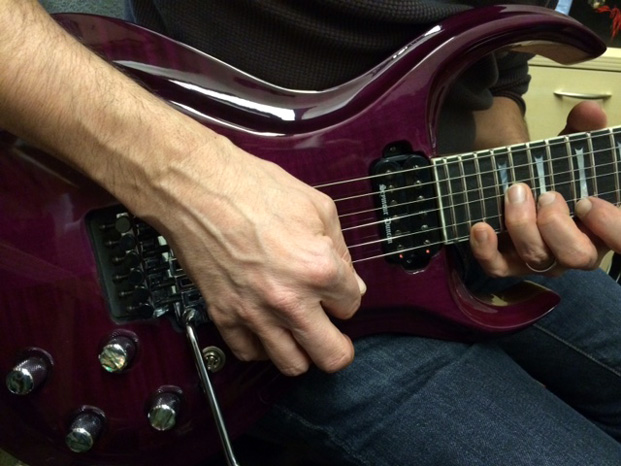Get your Maiden and Priest on by building awesome three-part guitar harmonies
Mike Chlasciak shows you how to achieve multilayered heavy metal bliss

One of the essential elements of great metal is the execution of razor-sharp harmony lead guitar lines.
Just listen to any of the most celebrated songs by Judas Priest, Iron Maiden, Metallica, Megadeth and other metal bands of all stripes and you'll hear the types of guitar harmonies I am referring to.
Many students have asked me how to go about constructing multilayered guitar harmonies and which notes will sound the best. To answer these questions, I’ll show you a simple and effective way to build a classic metal-style three-part harmonized guitar line.
The very first thing to decide when building guitar harmonies is what scale to use. The vast majority of metal music is based on minor scales, and the one that is exploited most often is natural minor, also known as the Aeolian mode. The intervallic structure of natural minor is 1 2 b3 4 5 b6 b7. In the key of E, the notes would be E F# G A B C D. This is the scale we are going to use in this column to build a three-part harmonized lead guitar line.
FIGURE 1 illustrates a melody, or primary line, that I constructed specifically for this lesson. Using the open low E string as a repeating pedal tone, the melodic line is played in a steady eighth-note rhythm (with the occasional quarter note added), with an opening melodic pattern (bar 1) that repeats in bars 3 and 5, functioning as a recurring theme. Play this melody repeatedly until you have it memorized and comfortably under your fingers.
Now let’s add our first harmony line, or secondary part. The most common way to create harmonies is to use the notes that are a third above the melody while staying diatonic to (within the scale structure of) the appropriate scale. FIGURE 2 illustrates the first harmony. After doubling the open low-E pedal tone, the first fretted note played is a G (on beat two of bar 1), which is a third higher than E, the first note of the melodic line.
The simplest way to know what note is a third above any note in a specific scale is to count two scale degrees higher than the original melody note. If the melody note is E, the next two scale degrees of E natural minor are F# and G, so G is the note two scale degrees, or a third, above E. Likewise, the four-note line that falls across beats three and four of bar 1 in FIGURE 1 begins on G, so the harmony line begins on B, two scale degrees higher, as shown in FIGURE 2. This “third above” formula is then applied to the entire pattern.
Get The Pick Newsletter
All the latest guitar news, interviews, lessons, reviews, deals and more, direct to your inbox!
Now let’s add a second harmony part, or tertiary line—the third line in the three-part harmony. This is formulated in the same manner as the first harmony line. Starting from the first note of that line, G, I begin a third above, starting on B. FIGURE 3 presents this third line, or second harmony, and all of the subsequent notes are situated a third above the notes of the secondary line (FIGURE 2), as they fall diatonically within E natural minor. Note that this third line sits a fifth above the initial melody (FIGURE 1). When one hears all three lines played simultaneously, a perfect three-part harmony is sounded.
Now that you have the formula for creating guitar harmonies, I encourage you to experiment with melodies based on different scales. There are endless possibilities to discover!

"Upgrading from your entry-level acoustic opens the door to an entirely new world of tonewoods, body shapes, and brands": 6 signs it's time to upgrade from your first acoustic guitar
"I'm past my prime": 5 common excuses for not learning the guitar – and 5 body and mind-boosting reasons you should










